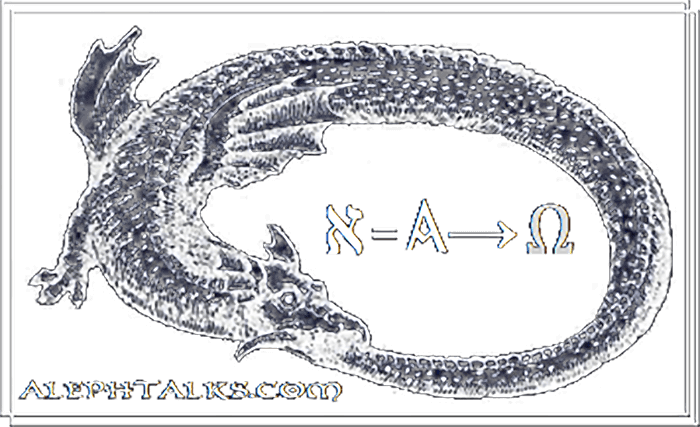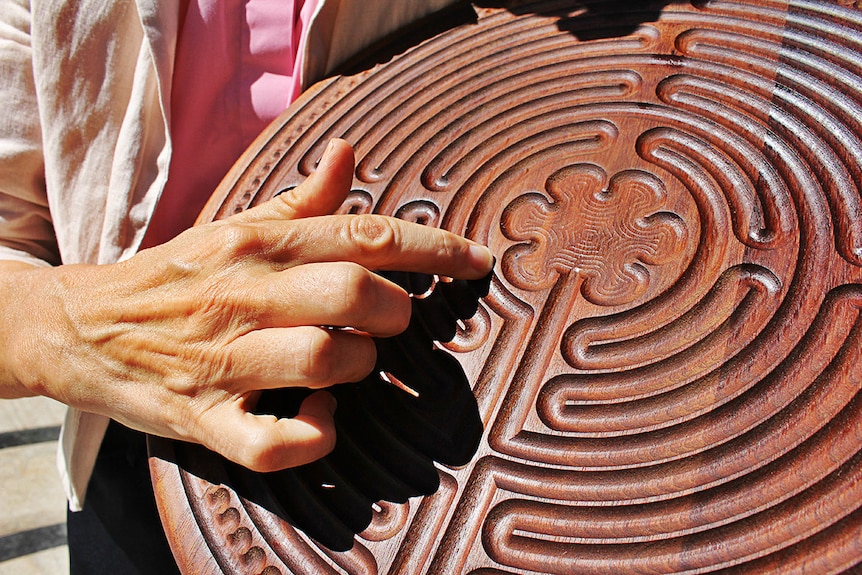In Greek mythology, the Labyrinth (Ancient Greek: Λαβύρινθος, romanized: Labúrinthos)[a] was an elaborate, confusing structure designed and built by the legendary artificer Daedalus for King Minos of Crete at Knossos. Its function was to hold the Minotaur, the monster eventually killed by the hero Theseus. Daedalus had so cunningly made the Labyrinth that he could barely escape it after he built it.
Although early Cretan coins occasionally exhibit branching (multicursal) patterns, the single-path (unicursal) seven-course "Classical" design without branching or dead ends became associated with the Labyrinth on coins as early as 430 BC, and similar non-branching patterns became widely used as visual representations of the Labyrinth – even though both logic and literary descriptions make it clear that the Minotaur was trapped in a complex branching maze. Even as the designs became more elaborate, visual depictions of the mythological Labyrinth from Roman times until the Renaissance are almost invariably unicursal. Branching mazes were reintroduced only when hedge mazes became popular during the Renaissance.
In English, the term labyrinth is generally synonymous with maze. As a result of the long history of unicursal representation of the mythological Labyrinth, however, many contemporary scholars and enthusiasts observe a distinction between the two. In this specialized usage maze refers to a complex branching multicursal puzzle with choices of path and direction, while a unicursal labyrinth has only a single path to the center. A labyrinth in this sense has an unambiguous route to the center and back and presents no navigational challenge.
Unicursal labyrinths appeared as designs on pottery or basketry, as body art, and in etchings on walls of caves or churches. The Romans created many primarily decorative unicursal designs on walls and floors in tile or mosaic. Many labyrinths set in floors or on the ground are large enough that the path can be walked. Unicursal patterns have been used historically both in group ritual and for private meditation, and are increasingly found for therapeutic use in hospitals and hospices.
In Greek mythology, the Labyrinth (Ancient Greek: Λαβύρινθος, romanized: Labúrinthos)[a] was an elaborate, confusing structure designed and built by the legendary artificer Daedalus for King Minos of Crete at Knossos. Its function was to hold the Minotaur, the monster eventually killed by the hero Theseus. Daedalus had so cunningly made the Labyrinth that he could barely escape it after he built it.
Although early Cretan coins occasionally exhibit branching (multicursal) patterns, the single-path (unicursal) seven-course "Classical" design without branching or dead ends became associated with the Labyrinth on coins as early as 430 BC, and similar non-branching patterns became widely used as visual representations of the Labyrinth – even though both logic and literary descriptions make it clear that the Minotaur was trapped in a complex branching maze. Even as the designs became more elaborate, visual depictions of the mythological Labyrinth from Roman times until the Renaissance are almost invariably unicursal. Branching mazes were reintroduced only when hedge mazes became popular during the Renaissance.
In English, the term labyrinth is generally synonymous with maze. As a result of the long history of unicursal representation of the mythological Labyrinth, however, many contemporary scholars and enthusiasts observe a distinction between the two. In this specialized usage maze refers to a complex branching multicursal puzzle with choices of path and direction, while a unicursal labyrinth has only a single path to the center. A labyrinth in this sense has an unambiguous route to the center and back and presents no navigational challenge.
Unicursal labyrinths appeared as designs on pottery or basketry, as body art, and in etchings on walls of caves or churches. The Romans created many primarily decorative unicursal designs on walls and floors in tile or mosaic. Many labyrinths set in floors or on the ground are large enough that the path can be walked. Unicursal patterns have been used historically both in group ritual and for private meditation, and are increasingly found for therapeutic use in hospitals and hospices.
Many people find spiritual healing and insight in the circuitous, "serpentine" paths of the labyrinth — said to originate in the tracing of Mercury's apparent annual orbit (above, right). Shown here to the left is the 1100 C.E. 42-foot Chartres Labyrinth, made of blue and white marble (laboriously transported from Wales — long before railroads or trucks). These indoor medieval labyrinths were thought to have been navigated on pilgrims' knees during the Crusades, as a symbolic substitute for the then-perilous physical "Journey to Jerusalem." However, pre-Christian examples are found literally all over the planet, and were used for many other purposes, including initiations associated with the Solstices and Equinoxes, and the in-between points 45 days apart such as May Day. The so-called "Minor Sabbaths" of the pagan calendar year include, in Celtic terms, Imbolc (or Candlemas) - February 2; Beltaine, May 1; Lammas or Lughnasa, August 2; and Samhain (Halloween, All Saints' Day, All Souls' Day, October 31, November 1).
As labyrinth facilitators are fond of pointing out, when a young man asked Carl Jung what the fastest route to his destiny was, Jung replied: "A detour." Unitarian theologian Ralph Waldo Emerson is credited with another labyrinth insight: "The Journey Is the Destination." And more specifically, as Jill Kimberly Hartwell Geoffrion says in Praying The Labyrinth: "Labyrinths are symbols, spiritual tools, mathematical images, harmonic patterns, pathways of discovery, playgrounds of prayer.”
The U-turn segments resemble (and perhaps represent) both the folds of a brain and the side and frontal views of a uterus and the word itself is thought to derive from the LABRYS shapes where the U-turns meet up back-to-back. The word labyr-inth is generally translated as "The Place of the Labrys."
For many who work in any kind of healing field, and for many who have ever experienced profound healing in their own lives, walking the labyrinth is an appropriate metaphor for this kind of non-linear process, with its inevitable ups-and-downs and backs-and-forths; setbacks, detours, U-turns, delays, times of hope, faith, surrender, despair, and surprising breakthroughs. Many experience the labyrinth's energy field itself as a kind of spiritual technology that seems to affect our brains (which it's thought by some to resemble), especially where the U-turns occur and seem to facilitate some kind of hemispheric shift. Walking, being wheeled through, and even tracing finger labyrinths have all been shown to be physiologically beneficial for patients with Parkinson's.
Incidentally, the design at the center of the Chartres Labyrinth references the simple fact of geometry that a circle can be surrounded by exactly six circles of the same size. Hence this concept is considered to be fundamental to Sacred Geometry — referring esoterically to the seven days of the week and the seven classical planets (named accordingly).

